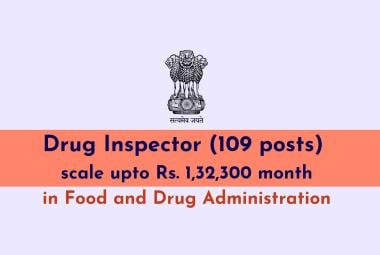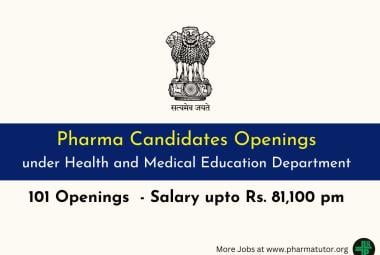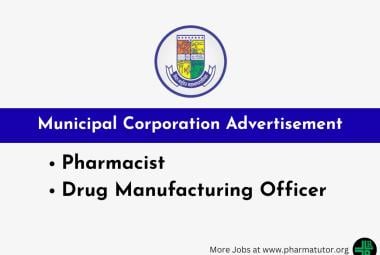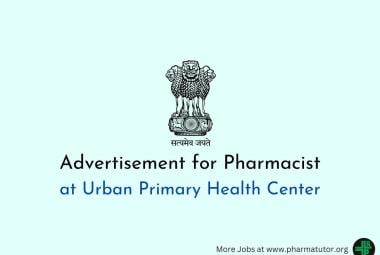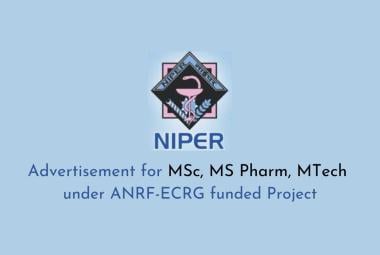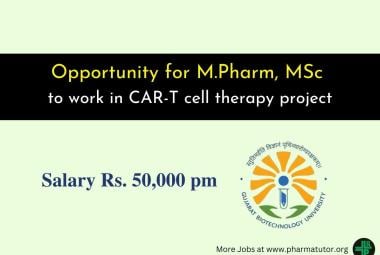{ DOWNLOAD AS PDF }
 ABOUT AUTHORS:
ABOUT AUTHORS:
Amarjeet Singh*, Sudeep Bhardwaj, Ashutosh Aggarwal
Department of Pharmacology,
Seth G. L. Bihani S. D. College of Technical Education,
Institute of Pharmaceutical Sciences & Drug Research,
Sri Ganganagar, Rajasthan 335001, India
*amarjeetsingh024@gmail.com
ABSTRACT
Objective: The choice of drug for the treatment of hypertension changes at short intervals. Drug utilization studiesconducted at regular intervals help to guide the physician in prescribing drugs rationally. The present study was done toanalyze the prescribing patterns of antihypertensive drugs in a NorthIndian hospital.
Material & method: A retrospective, crosssectional analysis of prescriptions of antihypertensive cases admitted in Medicine in-patient wards of civil hospital of Sri Ganganagar was conducted. All the prescription files with diagnosis ofessential hypertension were analyzed. Prescriptions for hypertension with other co-morbid conditions were also included. Frequency and proportions of utilization of antihypertensive medications were charted and figured.
Result: During the studyperiod, there were 435 prescriptions for essential hypertension. The most frequently prescribed antihypertensive medications were: monotherapy (42.06%), (57.94%) of patients were on multiple drugtherapy, the most favored fixed drug combination being diuretics with angiotensin receptor blockers (31.74%).
Conclusion: The present study revealed that Angiotensin receptor blockers arethe drugs of choice as monotherapy and as combination therapy for hypertensives. This pattern of prescription is also supported by the current JNC VIII guidelines for the treatment of hypertension.
[adsense:336x280:8701650588]
REFERENCE ID: PHARMATUTOR-ART-2328
|
PharmaTutor (ISSN: 2347 - 7881) Volume 3, Issue 4 How to cite this article: A Singh, S Bhardwaj, A Aggarwal; Prescribing Trend of Antihypertensive Drugs in Sri Ganganagar District: A Retrospective Study; PharmaTutor; 2015; 3(4); 53-59 |
INTRODUCTION
Hypertensive vascular disease is a common entity readily detectable, asymptomatic at times, easily treatable usually and often known to lead to lethal complications if left untreated. It is a clinical syndrome occurring in the general population, characterized by sustained elevation of blood pressure. According to the report of the joint national committee for detection, evaluation and treatment of high blood pressure, hypertension is defined as a clinical statewhere the systolic blood pressure is above 139mmHg and the diastolic blood pressure is above 89mmHg persistently[1]. In the majority of cases, a specificunderlying cause of hypertension is not known. Such patients are said to have essential hypertension[2]. The purpose of treating essential hypertension is toprevent complications and to improve patient survivaland the selection of the antihypertensives should bebased on safety, efficacy and freedom from adverseeffects. Accordingly, appropriate drug therapy canensure immense therapeutic benefit in patients with essential hypertension with least adverse effects. The study of a prescription pattern is in fact, a part ofmedical audit involving monitoring and evaluation ofvarious prescriptions of medical practitioners to ensurerationality in medical care[3]. A prescription-based survey is considered to be oneof the most effective methods to assess and evaluate theprescribing attitude of physicians and dispensingpractice of pharmacists[4].
[adsense:468x15:2204050025]
MATERIAL & METHOD
Prescription collection:
The present study was a retrospective, cross sectionalanalysis of antihypertensive prescriptions whichincluded all prescriptions of hypertensive patientsduring 1 may to 30 may 2014 conductedin the Outpatientand inpatient department of general medicine, orthopedics, eye, emergency, psychiatry, general surgery, skin and dermatologyat Civil hospital Sri Ganganagar Rajasthan. All the prescription files with diagnosis of essentialhypertension (ICD-9CM: 401-405, WHO internationalcode: A 26) were analyzed. This study was carried out after getting approval from the Institutional Ethics Committee of Seth G.L. Bihani S.D. College of Technical Education Institute of Pharmaceutical Sciences & Drug Research. Patients with any stage of hypertension with or without co-morbidities were included in the study. The patient’s demographics, antihypertensive drugs prescribedwere entered in a specially designed proforma. Antihypertensive drugs were grouped into seven categories, namely Angiotensin Converting EnzymeInhibitors (ACEI), Angiotensin receptor blockers(ARB), Beta-blockers (BB), Calcium channel blockers(CCB), Diuretics, Alpha adrenergic blockers andCentral sympatholytic drugs.
RESULTS
A total of 435prescriptions were monitored, of which 272were male and 163were female. The age group of the patients vary from 20– 79years. Among hypertensives,183 (42.06%) patients were under monotherapy, 189(43.44%)patients were undertwo drugcombination therapy, 57(13.10% )patients were under three drug combination therapy and only 6 (1.36% ) patients were under four drug combination therapy. In monotherapy, Angiotensin receptor blocker (Losartan) wasmost commonly prescribed (n=78;42.62%)(Table 2, fig.1). In combination therapy, a two drug combination consisting ofAngiotensin receptor blocker (Losartan) and diuretics (hydrochlorthiazide) were given to the majority of patients (n=60;31.74%)(Table3, fig.2),a three drug combination of angiotensin receptor blocker (Losartan), calcium channel blocker (amlodipine) and β-blocker (Metoprolol)were given to the majority of patients (n=18;31.75%)(Table no.4, fig.3) and a four drug combination ofangiotensin receptor blocker(Losartan), calcium channel blockers (amlodipine), β-blocker (Metoprolol) and Thiazide (Hydrochlorothiazide) were given to only of patients (n=3) (Table No.5, fig. no.4).
Most of the Monotherapy of hypertension was prescribed in the age group of 50-59 year 25.13%(Table no 6 fig. 5), in the two drug combination therapy was prescribed in the age group of 60-69 year 28.57%(Table no.7 fig 5), in the three drug combination therapy was prescribed in the age group of 40-49 year 33.33%(Table no.8 fig 5).
Monotherapy and combination therapy were used at rates of 42.06% and 57.93% respectively. Hansson L 1996also reported similar results and suggested that blood pressure could be adequately controlled with the help of combination therapy[5]. Furthermore, combination therapy seems to be a rational approach to reduce the cardiovascular mortality[6]. The Joint National Committee on Prevention, Detection, Evaluation and Treatment of High BloodPressure (JNC VI and JNC VII) reports thatvolume overload due to inadequate diuretic therapy isone of the commonest reasons for resistance tohypertensive treatments [7].
The present studyalsorevealed that Angiotensin receptor blockers arethe drugs of choice as monotherapy and as well as in combination therapy for hypertensives. This pattern of prescription writing following the JNC VIII guidelines which also recommends Angiotensin receptor blocker in monotherapy and as well as in combination therapy.
TABLE NO. 1 Types of Therapy Prescribed
|
Drug Therapy |
Male |
Female |
Total |
P value |
Odds ratio |
RR |
|
Monotherapy |
110(25.28%) |
73(16.78%) |
183(42.06%) |
|
|
|
|
Combination therapy |
162(37.24%) |
90(20.68%) |
252(57.93%) |
0.42ns |
0.8371 |
0.9350 |
Table no. 2 Mono Therapy of Antihypertensive
|
Drug |
No. Of Patients |
Male |
Female |
P value |
Odds ratio |
RR |
|
Atenolol |
9(4.91%) |
6(3.27%) |
3(1.63%) |
|
|
|
|
Metoprolol |
18(9.83%) |
13(7.10%) |
5(2.73%) |
0.9304 |
1.077 |
1.026 |
|
Enalpril |
24(13.11%) |
7(3.82%) |
17(9.28%) |
0.0175 |
4.510 |
2.229 |
|
Remipril |
15(8.19%) |
9(4.91%) |
6(3.27%) |
0.0568 |
0.2745 |
0.4861 |
|
Losartan |
78(42.62%) |
47(25.68%) |
31(16.93%) |
0.9852 |
0.9894 |
0.9957 |
|
Telmisartan |
6(3.27%) |
5(2.73%) |
1(0.54%) |
0.2620 |
0.3032 |
0.7231 |
|
Amlodipine |
24(13.11%) |
14(7.65%) |
10(5.46%) |
0.2557 |
3.571 |
1.429 |
|
Nifedipine |
3(1.63%) |
3(1.63%) |
0 |
0.1588 |
0.1973 |
0.5833 |
|
Hydrochlorthaizide |
3(1.63%) |
3(1.63%) |
0 |
|
|
|
|
Torasemide |
3(1.63%) |
3(1.63%) |
0 |
|
|
|
|
Total |
183 42.06% |
11025.28% |
73 16.78% |
|
|
|
Table NO. 3 Two Drug Combination Therapy
|
Drugs |
No.Ofpatients |
Male |
Female |
P value |
odds ratio |
RR |
|
Amlodipine+Furosemide |
3(1.58%) |
0 |
3(1.58%) |
|
|
|
|
Amlodipine+ Metoprolol |
6(3.17%) |
4(2.11%) |
2(1.05%) |
0.0578 |
0.07937 |
0.000 |
|
Losartan+Torasemide |
6(3.17%) |
5(2.64% |
1(0.52%) |
0.5050 |
0.4000 |
0.8000 |
|
Losartan+Enalpril |
6(3.17%) |
5(2.64% |
1(0.52%) |
1.000 |
1.000 |
1.000 |
|
Losartan+Metoprolol |
9(4.76%) |
7(3.70%) |
2(1.05%) |
0.7921 |
1.429 |
1.071 |
|
Losartan+HCTZ |
60(31.74%) |
38(20.10) |
22(11.64%) |
0.3962 |
2.026 |
1.228 |
|
Losartan+Remipril |
9(4.76%) |
5(2.64%) |
4(2.11%) |
0.6534 |
1.382 |
1.140 |
|
Furosemide+Spironolactone |
6(3.17%) |
2(1.05%) |
4(2.11%) |
0.3980 |
2.5 |
1.667 |
|
Enalpril+Metoprolol |
3(1.58%) |
3(0.68%) |
0 |
0.0578 |
0.07937 |
0.3333 |
|
Losartan+Amlodipine |
42(22.22%) |
26(13.75%) |
16(8.46%) |
0.1830 |
4.358 |
1.615 |
|
Telmisartan+HCTZ |
6(3.17%) |
6(3.17%) |
0 |
0.0641 |
0.1235 |
0.6190 |
|
Telmisartan+Amlodipine |
3(1.58%) |
0 |
3(1.58%) |
0.0027 |
91.00 |
infinity |
|
Remipril+Amlodipine |
3(1.58%) |
0 |
3(1.58%) |
|
|
|
|
Remipril+Lisinopril |
3(1.58%) |
0 |
3(1.58%) |
|
|
|
|
Remipril+Metoprolol |
18(9.52%) |
11(2.52% |
7(3.7% |
0.0497 |
0.09317 |
0.000 |
|
Remipril+Furosemide |
3(1.58%) |
3(1.58%) |
0 |
0.1859 |
0.2190 |
0.6111 |
|
Amlodipine+Atenolol |
3(1.58%) |
2(1.05%) |
1(0.52%) |
0.2733 |
4.200 |
1.500 |
|
Total |
189 |
120 |
69 |
|
|
|
Table No. 4 Three Drug Combination Therapy
|
Drugs |
No. Of patients |
Male |
Female |
P value |
Odds value |
RR |
|
Furosemide+Spironolactone+ Telmisartan |
3(5.26%) |
3(5.26%) |
0 |
|
|
|
|
Furosemide+Spironolactone+ Propanolol |
3(5.26%) |
3(5.26%) |
0 |
|
|
|
|
Amlodipine+Metoprolol+ Remipril |
3(5.26%) |
3(5.26%) |
0 |
|
|
|
|
Furosemide+Spironolactone+ Remipril |
3(5.26%) |
3(5.26%) |
0 |
|
|
|
|
Losartan+Hydrochlorthiazide+ Metoprolol |
9(15.78%) |
4(7.01%) |
5(8.77%) |
0.0910 |
8.556 |
2.250 |
|
Losartan+Hydrochlorthiazide+ Amlodipine |
9(15.78%) |
4(7.01%) |
5(8.77%) |
1.0000 |
1.000 |
1.000 |
|
Losartan+Hydrochlorthiazide+ Remipril |
3(5.26%) |
2(3.5%) |
1(1.75%) |
0.5050 |
0.4000 |
0.6667 |
|
Amlodipine+Atenolol+ Enalpril |
6(10.52%) |
4(7.01%) |
2(3.50%) |
1.0000 |
1.000 |
1.000 |
|
Losartan+Amlodipine+ Metoprolol |
18(31.57%) |
11(19.29%) |
7(12.28%) |
0.8077 |
1.273 |
1.091 |
|
Total |
57 |
37 |
20 |
|
|
|
Table no. 5 Four Drug Combination Therapy
|
Drugs |
No. Of patients |




